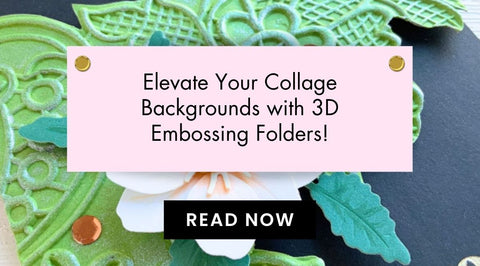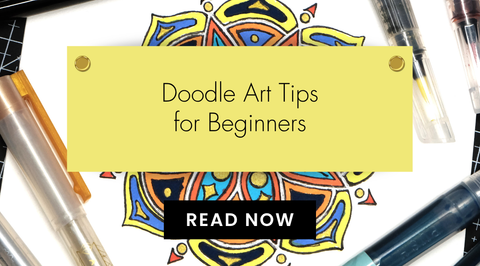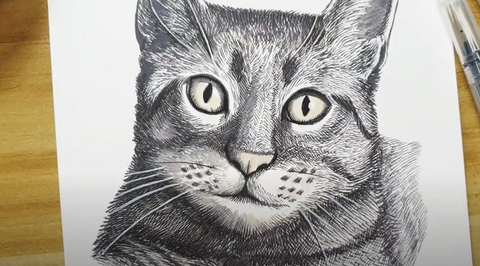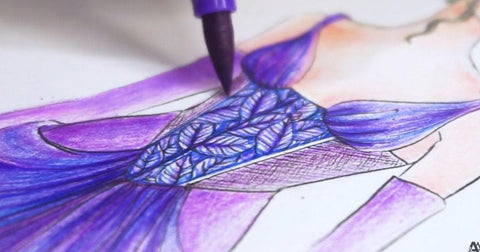Into the Creative Mind of Raphael: His Art, Style, and Story
Last Updated: July 29, 2024
In today’s post, we’re taking you on a journey into the captivating realm of one of history's most renowned artists: Raphael, the Italian painter. From his mesmerizing masterpieces to the intricate threads of his personal story, there's so much to uncover within the creative mind of this iconic figure. Let's dive in:

Early Years and Education
Raphael, born Raffaello Sanzio da Urbino on April 6, 1483, in the picturesque town of Urbino, Italy, was destined for greatness from a young age. Raised in an environment steeped in culture and creativity, he inherited a passion for art from his father, Giovanni Santi, a respected painter and poet.
Under the guidance of his father and other local artists, Raphael honed his skills and developed a prodigious talent that caught the attention of patrons and scholars alike. His early works revealed a precocious understanding of form, perspective, and composition, setting the stage for his meteoric rise in the world of Renaissance art.
The Florentine Years
In the early 16th century, Raphael's quest for artistic mastery led him to the vibrant city of Florence, the epicenter of the Italian Renaissance. There, he immersed himself in the rich cultural milieu, studying the works of masters such as Leonardo da Vinci and Michelangelo, whose innovative techniques would leave an indelible mark on his art style.

Madonna of the Goldfinch (c. 1506)
During his time in Florence, Raphael produced some of his most celebrated works, including the iconic "Madonna of the Goldfinch" and "The School of Athens," a masterpiece commissioned for the Vatican's Apostolic Palace. These paintings showcased his remarkable talent for capturing both the divine and the human in equal measure, earning him widespread acclaim and patronage from the highest echelons of society.
The Roman Years and Vatican Commission
In 1508, Raphael received a fateful invitation from Pope Julius II to embark on a grand artistic venture that would solidify his legacy for centuries to come. Tasked with decorating the papal apartments in the Vatican Palace, Raphael seized the opportunity with fervor, transforming the space into a breathtaking showcase of his unparalleled skill and vision.

The Stanza della Segnatura (1508)
Over the next decade, Raphael's creative genius reached its zenith as he adorned the walls and ceilings of the Vatican with a series of frescoes that would come to define the High Renaissance. From the ethereal beauty of "The Stanza della Segnatura" to the celestial grandeur of "The Transfiguration," his works transcended mere decoration, offering profound insights into theology, philosophy, and the human condition.
The Artistry of Raphael
With a brush in hand and boundless imagination, he brought to life some of the most breathtaking works of the Italian Renaissance. From the ethereal beauty of "The School of Athens" to the tender grace of "The Sistine Madonna," his paintings resonate across centuries, inviting us to immerse ourselves in their timeless allure.

Raphael's mastery of technique is undeniable, but it's his ability to infuse each stroke with emotion and depth that truly sets him apart. His use of color, light, and composition creates a sense of harmony that speaks to the soul, drawing us into worlds both familiar and fantastical.
Style and Influence
Raphael's style is characterized by its elegance, balance, and sheer brilliance. Though influenced by the greats, he forged his path by blending classical ideals with a touch of innovation that was uniquely his own.
His commitment to humanism shines through in every piece, as he delicately captures the beauty and complexity of the human form. Whether depicting saints or scholars, his figures exude a sense of humanity that transcends time and space, inviting us to reflect on our shared human experience.

Legacy and Influence
Tragically, Raphael's life was cut short at the tender age of 37, leaving behind a body of work that would inspire generations of artists to come. His untimely passing in 1520, likely due to fever, marked the end of an era, but his legacy endured, shaping the course of Western art for centuries to come.
From the luminous landscapes of the Baroque period to the avant-garde experiments of the Modernists, Raphael's influence reverberates across time and space, a testament to the enduring power of his vision and talent. Today, his paintings continue to captivate audiences in museums and galleries around the world, reminding us of the timeless beauty that resides within the creative spirit of humanity.
Raphael’s Famous Masterpieces
-
The School of Athens (1511)

This monumental fresco, located in the Vatican's Apostolic Palace, is perhaps Raphael's most iconic work. Depicting a gathering of ancient philosophers, scientists, and thinkers in a grand architectural setting, the painting is a masterpiece of perspective, composition, and symbolism.
-
The Sistine Madonna (1513)
Commissioned for the altar of the Benedictine monastery of San Sisto in Piacenza, Italy, this exquisite painting is renowned for its tender portrayal of the Virgin Mary holding the infant Jesus. The ethereal figures of Mary and Jesus, flanked by cherubs at their feet, exude a sense of divine grace and serenity.
-
Madonna of the Goldfinch (c. 1506)
This intimate portrayal of the Virgin Mary, Jesus, and John the Baptist is brimming with warmth and tenderness. Set against a lush landscape, the figures are united by the delicate gesture of the Christ Child offering a goldfinch to John, symbolizing the future sacrifice of Jesus.
-
The Transfiguration (1520)

Completed shortly before his death, this monumental altarpiece is considered one of Raphael's crowning achievements. Divided into two distinct scenes—the Transfiguration of Christ on Mount Tabor and the miraculous healing of a possessed boy—the painting showcases Raphael's mastery of composition, color, and narrative storytelling.
-
The Triumph of Galatea (1514)
This fresco, located in the Villa Farnesina in Rome, depicts the nymph Galatea riding a shell chariot drawn by dolphins, surrounded by a host of mythological figures. A celebration of love, beauty, and the power of the imagination, the painting exemplifies Raphael's skill in capturing the idealized forms of classical antiquity.
-
Portrait of Baldassare Castiglione (c. 1514-1515)
This iconic portrait of the esteemed Italian diplomat and author is a testament to Raphael's ability to capture the essence of his subjects with empathy and insight. Castiglione's thoughtful gaze and dignified posture convey both intellect and humanity, making it one of the most celebrated portraits of the Renaissance.
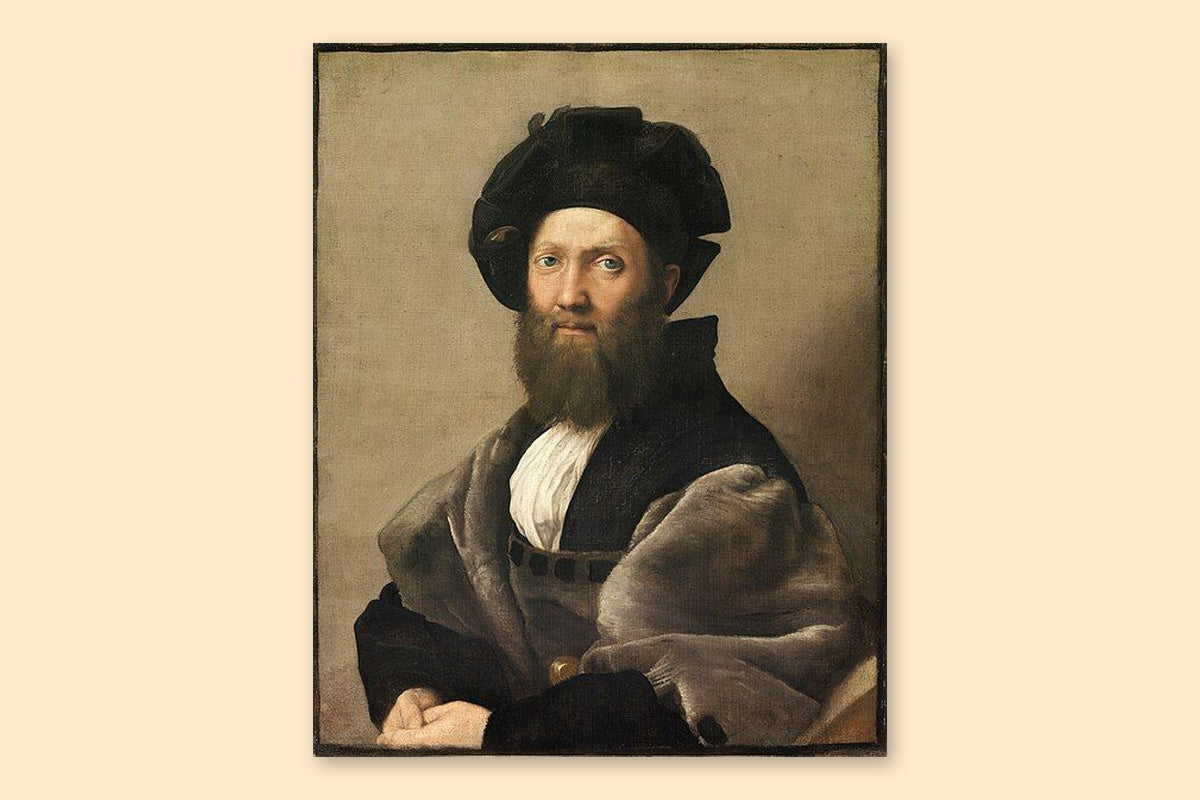
Portrait of Baldassare Castiglione (c. 1514-1515)
As we bid farewell to our journey into the creative mind of Raphael, we hope you've gained a deeper appreciation for the art, style, and story of this extraordinary individual. His legacy serves as a reminder of the boundless possibilities of human creativity and the enduring power of beauty to transcend time and space.
So, the next time you find yourself standing before a masterpiece by Raphael, take a moment to lose yourself in its splendor. In those fleeting moments, you may just catch a glimpse of the genius of Raphael, the Italian painter – a genius that continues to inspire and enchant us to this day.
For more inspiration and ideas, feel free to drop by The Creative Corner.


